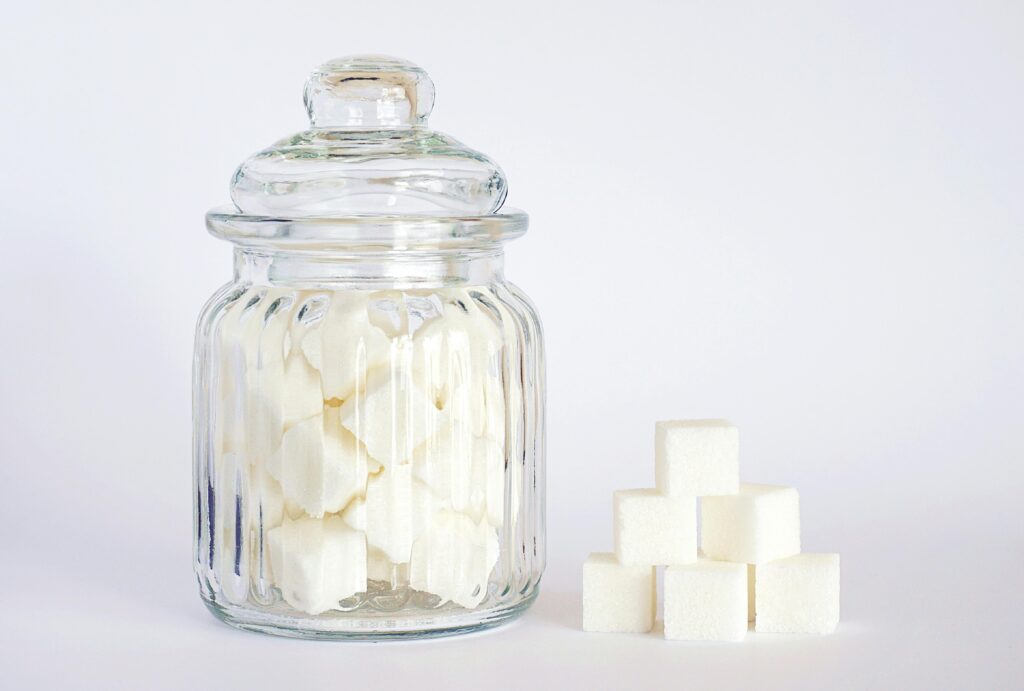The Science of Sugar: How Different Sugars Affect Your Bakes

Sugar does a lot more than just make things sweet.
In baking, sugar plays a crucial role in texture, moisture, color, and even rise. Choosing the right type of sugar—or substituting it without knowing how it works—can totally change the outcome of your dessert.
In this post, we’ll break down the most common types of sugar, how they behave in baking, and when to use each one. By understanding the science behind sugar, you’ll start baking with more confidence—and more consistency.
1. Granulated White Sugar (Table Sugar)
What it is:
Refined, pure sucrose. It’s the most common sugar in baking.
How it affects your bake:
Adds sweetness
Helps baked goods brown via caramelization
Aerates batters when creamed with butter (important for cakes and cookies)
Contributes to crispness in cookies
When to use it:
Standard for cakes, cookies, muffins, and anywhere the recipe calls for “sugar.”
2. Brown Sugar (Light & Dark)
What it is:
White sugar with molasses added back in.
Light brown sugar = ~3.5% molasses
Dark brown sugar = ~6.5% molasses
How it affects your bake:
Adds moisture due to the molasses
Gives baked goods a soft, chewy texture
Adds deeper, caramel-like flavor
Can affect color (darker baked goods)
When to use it:
Ideal for chewy cookies, banana bread, gingerbread, and moist cakes.
3. Powdered Sugar (Confectioners’ Sugar)
What it is:
Finely ground white sugar with a bit of cornstarch to prevent clumping.
How it affects your bake:
Dissolves quickly in liquids
Creates smooth, silky frostings and icings
Not ideal for creaming (doesn’t trap air well)
When to use it:
For frostings, buttercream, glazes, dusting, or no-bake desserts.
4. Turbinado Sugar (Raw Sugar)
What it is:
Partially refined sugar with large, golden crystals and mild molasses flavor.
How it affects your bake:
Adds crunch and sparkle as a topping
Doesn’t dissolve easily, so not great as a direct substitute for white sugar
When to use it:
Sprinkled on muffins, pies, or cookies before baking for texture and visual appeal.
5. Coconut Sugar
What it is:
Made from the sap of coconut palm trees. It’s less processed and has a lower glycemic index than white sugar.
How it affects your bake:
Adds a caramel/maple-like flavor
Doesn’t cream well with butter
Can make baked goods denser or darker
When to use it:
Healthier dessert alternatives, paleo or natural baking, or recipes where a deeper flavor works (like brownies or spice cakes).
6. Liquid Sweeteners (Honey, Maple Syrup, Agave)
What they are:
Unrefined or semi-refined natural sweeteners in liquid form.
How they affect your bake:
Add moisture
Often lower in sweetness than sugar
Can affect structure (because they’re liquids)
Impact browning and flavor
When to use them:
In recipes specifically designed for liquid sweeteners, or when adjusting the dry-to-wet ratio to compensate.
Pro Tip: If subbing for white sugar:
Use ¾ cup liquid sweetener for every 1 cup of sugar
Reduce other liquids by ~2 tablespoons
Why Sugar Affects Texture, Not Just Taste
Sugar doesn’t just sweeten—here’s what it really does:
Moisture Retention: Sugar is hygroscopic (it holds water), keeping baked goods soft and moist.
Structure & Spread: It weakens gluten (for tender cakes) and contributes to cookie spread.
Caramelization: Helps baked goods brown and develop flavor.
Fermentation: In yeast breads, sugar feeds the yeast to help dough rise.
⚖️ Can You Substitute One Sugar for Another?
Yes, but it’s not a 1:1 flavor or function match.
Here’s a quick guide:
| Substitute | For | Adjustment Needed |
|---|---|---|
| Brown sugar | White sugar | Adds moisture & deeper flavor |
| Coconut sugar | Brown/white sugar | May require extra leavening |
| Powdered sugar | Granulated sugar | Only in frostings—not good for creaming |
| Maple syrup | White sugar | Reduce liquids in recipe by 2 tbsp per cup |
📌 Final Thoughts
Sugar is a foundational ingredient in baking, and understanding its role can take your desserts from good to unforgettable. Whether you’re after chewy, crispy, moist, or fluffy, the type of sugar you use truly matters.
